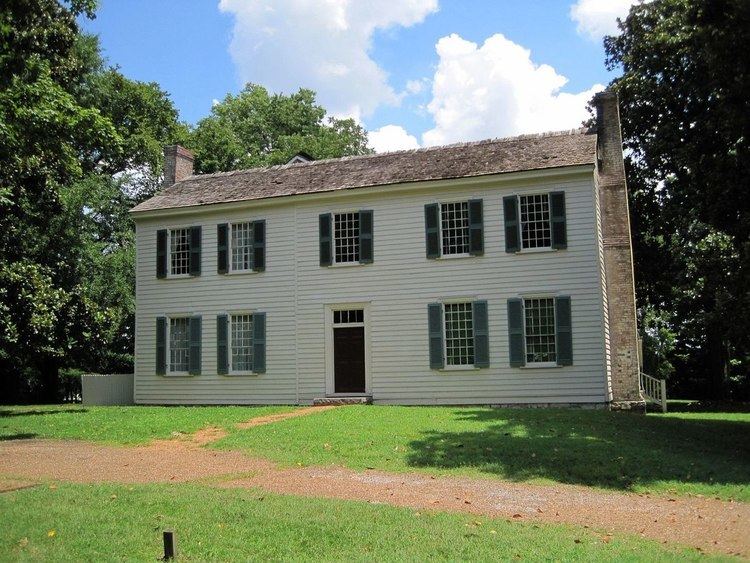Built 1799 Opened 1799 Phone +1 615-832-8197 Added to NRHP 30 December 1969 | NRHP Reference # 69000179 Area 4 ha Architectural style Federal architecture | |
 | ||
Address 636 Farrell Pkwy, Nashville, TN 37220, USA Hours Closing soon · 10AM–4:30PMTuesday10AM–4:30PMWednesday10AM–4:30PMThursday10AM–4:30PMFriday10AM–4:30PMSaturday10AM–4:30PMSundayClosedMonday10AM–4:30PMSuggest an edit Similar Belmont Mansion, Belle Meade Plantation, Fort Negley, Tennessee Agricultural Museum, Tennessee State Museum Profiles | ||
Travellers Rest is a historic plantation house in Nashville, Tennessee.
History
In 1799, the two story structure with four rooms was built by Judge John Overton (1766–1833). Overton was an advisor and close friend of Andrew Jackson, judge at the Superior Court of Tennessee and co-founder of Memphis, Tennessee. Overton originally named the property Golgotha after the large number of prehistoric skulls that were unearthed while digging the cellar of the house. Archaeologists now know that these remains were part of a large Mississippian village site. Overton changed the name of the plantation to Travellers Rest in the early 19th century to reflect the recreational effect his home had on him after the long rides on horseback that he had to undertake as a circuit judge. Overton died at Travellers Rest on April 12, 1833.
An addition was made to the house in 1812 to accommodate members of Overton's family. A long ell was added soon after 1820 when Overton married a widow with five children.
At the beginning of the Civil War, Overton’s widow occupied the home until her death in 1862. After her death, her son John and his wife Harriet and their children continued to occupy the home. The plantation’s farm, which covered 1,050 acres and was worked by 80 slaves, was valued at unknown million's of dollars during this time. A final addition to the house was made in 1887 by John Overton II, when two rooms where added to the ell, one above and one below.
The plantation building was saved from demolition and restored in 1954 to become a museum. Additional archaeological finds were reported from the property as recently as 1995, when construction at the visitors center resulted in disturbance of additional human burials. As of 2008, the Travellers Rest Plantation & Museum houses exhibits that document the life and work of John Overton, the history of the Overton Plantation and Nashville in the Civil War. It is located at 636 Farrell Parkway in Nashville. Travellers Rest is listed on the National Register of Historic Places.
